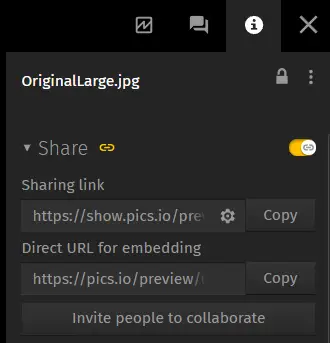In this article, you’ll learn:
At Pics.io, we absolutely love talking to our users. It shows us a lot of insights into the way how people actually use Pics.io and gives us ideas as to how we can improve our service.
Recently we wanted to learn more about our users that work in education sector. So we decided to approach them and to learn first-hand what brought them to Pics.io in the first place.
Our small survey rewarded us with some interesting revelations and exciting stories our users shared with us. Among them, a success story from Concordia College in Moorhead, MN.
Well, first things first.
Concordia College Case Study
Concordia College is a private liberal arts college with a diverse community of 2,000 students. In 2018, they've launched a promotional campaign RISE with an ambitious goal to raise as much as $150m in donations. These funds were supposed to finance virtually everything from student scholarships to the construction of new buildings.
Needless to say that with such an ambitious goal in mind, RISE had to be a powerful large-scale campaign with a gala event, a website, and a whole set of high-quality marketing collateral, including this high-budget video:
Their effort was duly rewarded. RISE proved to be a tremendous success. $130m out of the expected $150m has been collected so far, and it is still bringing in donations.
The campaign also raised general public awareness of Concordia College in the area. The video above even won two regional advertising awards!
It’s high time you asked me what on earth a DAM service has to do with all this?
Well, the thing is that RISE was a brand new campaign, so the Office of Communications and Marketing in Concordia College had to produce all assets from scratch to support it. That included a logo, graphics, posters, wording, brochures, postcards, mailers, packets, video, website… you name it.
Most of those materials were made in-house. You could easily imagine the enormous number of assets the Concordia team had to process to get the job done.
It’s very doubtful that could have achieved all this within a short timeline of 6 months, if they hadn’t had a Digital Asset Management Solution for Education.
Testimonial from a Client
This is how Evan Balko, Content Specialist in Concordia College, comments on that,
“We do all our own photography in-house, to maintain low-cost, high-quality, & quick turnaround. And with three designers, plus writers and social media specialists, everyone needs access to photos, and those photos need to be organized, tagged, and labeled so they can be searched. Without a well-setup DAM, we couldn’t produce the quality and quantity of work that we do, because so much time would be spent trying to find photos instead of designing brochures or other assets.
Our designers, developers, and writers can find photos quickly without having to constantly ask the photographers to find photos for them, which frees up the photographers to spend more time shooting and editing and not serving up photos. Plus, a good DAM system with a solid backup means our assets are safe, and downtime is minimal.
If you give it a little thought, you can’t but feel sorry for marketing teams that work for colleges and universities. Just think of all those crowds of people who are part of huge and dynamic “beehives” known as universities. Education nonprofits also play a vital role in supporting student success and driving educational equity. Here are some making a powerful impact.
Tenure teachers and visiting professors, undergraduate and post-graduate students, non-academic staff and athletic teams, donors and alumni, media and local communities… With so many stakeholders on the plate, it is quite challenging to build a 360-degree communication with a clear and consistent message.
How You Can Use DAM to Achieve Same Success
Since we're already here, let's take a demonstrative look at how you can use Pics.io DAM in the same way that Concordia College did. A picture is worth a thousand words, after all.
Problem 1: One Asset, Many Applications.
Creating even a single premium asset takes a lot of time and resources. It would be a shame to let it go to waste by using it only in one place. Hence, there is nothing wrong with adapting a dashing photo for your landing page, social media posts and using it to outreach prospective donors.
Here's how we'd do it.
Create a collection hierarchy that makes sense to you. There is no definitive way to do it, but we suggest that you separate assets by their destination like so:

That way, if you were navigating to the assets through the collection tree or by using the search function, you could find needed assets by typing the name of the collection:

We recommend arranging your collection structure that way instead of creating a separate collection for each asset. If you need a specific asset, it is easier to find it by using keywords functionality.
For this example, I have a photo of a library that I will use on my website and social media posts. When I uploaded all versions of that asset into my Pics.io, I assigned library promo keywords to them. Now, if I were to enter that in the search bar, I should find them both, regardless of how deep in nested collections they are:

If I want to narrow the search (say, I want only the Instagram version of the library promo asset. I can use the advanced search functionality. It allows me to combine multiple keywords by writing AND. So if I wanted to find an Instagram version of the library promo asset, I would do it this way:

Thanks to the collection hierarchies and keyword functionality, all my assets are always at the hand's reach, no matter how many photos I have!
Problem 2: Difficult to Keep Track of Revisions
There is no doubt in my mind that Concordia College went through many iterations before reaching the final versions of the assets. After all, when talking about promos for fundraising campaigns, there are few things worse than looking unprofessional or callous. Thankfully, Pics.io's version control can eliminate these risks as well.
In simple words, Pics.io keeps all versions of one asset under a single thumbnail. To see the revision history, I can just click on a needed asset to see all edits and comments that were added:

The same screen allows me to compare the latest revision to any previous one:


If I like this change to color grading, I can approve it so that the next person who stumbles upon this asset (like a marketing or sales rep) would know that they should be using the latest version:

Do note that it does not have to be the latest version! You can approve any earlier revision and it would appear as the "asset version to use" the very same way.
And if your team doesn't have Photoshop or any other professional image editor, Pics.io got you covered! Although we cannot compete with the functionality of dedicated applications, Pics.io's built-in editor can work just fine. I did the revision you see above in that editor, for instance!
Problem 3: Sharing Assets Inside & Outside Organization
There are numerous reasons why you would want to share assets with someone who might not be a part of your DAM team. Maybe you're using a third party to edit your assets, or you've made an infographic for prospective donors explaining the campaign funds distribution. For any scenario, Pics.io's asset sharing got you covered.
To create a shareable link for an asset, click share toggle on the asset's info panel:

And there you go. Sharing this asset with anyone now could not be easier. Here, I'll even share that picture with you!
By following that link, you'll see that asset in full resolution but only that. You cannot download it or see the revision or comment history. However, if you want to do something else with your assets, you can just click that little cogwheel to bring up customizable sharing permissions:

You can do that with entire collections as well. When you hover over a chosen collection, you get an option to publish it to the web:

Like before, modify any permissions or add a personal touch to how your website is going to look and you'll get a link to share a beautifully arranged collection in no time!
Conclusion
Like in that story with Concordia College, having a DAM system at your service means you have your entire digital library within easy reach.
You don’t have to waste your precious time looking for necessary photos or logos to send them to your designers, only to repeat the same procedure several days later when you need to share them with your media partner.
A DAM service saves you from getting bogged down with logistics. Instead, you can use this time to do some more strategical thinking.

Success stories from different universities prove that thoughtful, carefully planned marketing campaigns, spiced up with creativity, can do miracles to university brands.
Let that be an inspiration for you. Learn from best practices and avoid unfortunate blunders such as with the notorious new acronym for the Central University of Newcastle upon Tyne.
And use a smart Digital Assets Management service, of course, to keep your story clear and coherent.
Curious? Learn more about Pics.io or book a demo with us and we'll answer all of your questions!



